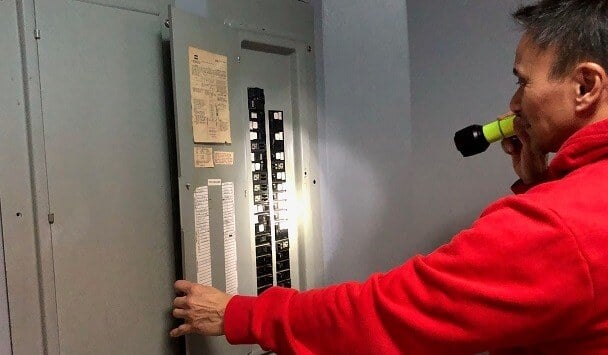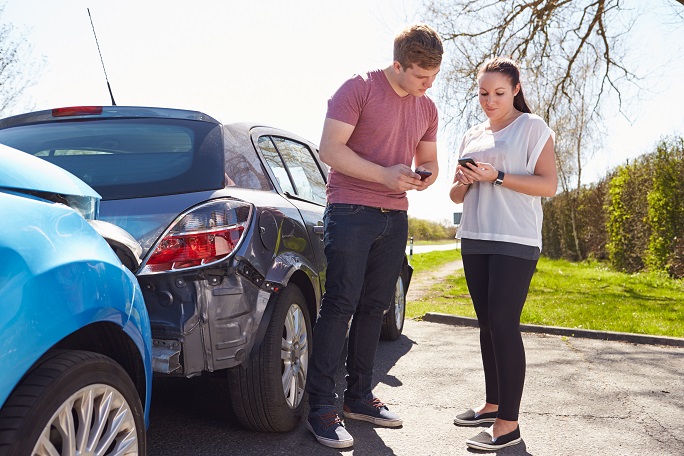
Do you remember what it was like to learn to drive a car? For me, it was both exciting and scary at the same time. I remembered this when I began teaching my own kids to drive, so it was important to me to make sure they understood the freedom and the responsibility that comes with driving. I also was aware of the "100 Deadliest Days" on the road for teen drivers.
But what about what to do if they have a car accident? Even a fender bender could be pretty intimidating for a new driver. Teaching your new driver how to navigate the aftermath of a crash will empower and help them become a more responsible driver. It also can help them understand the purpose and benefits of car insurance.
Prepare your teen driver to navigate a car accident
The Behind the Wheel Program through Virginia's public school system is fantastic. Students learn how to yield at a 4-way stop, navigate a traffic circle, parallel park, and properly turn right on red. You ensure they know important rules and consequences for expected safe driving behavior.
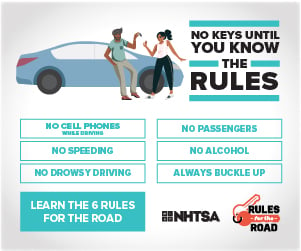
Here at NNINS, we also know how important it is for their safety. So we created a step-by-step guide to protect your teen and provide the confidence to handle an accident from start to finish. We also think it will give you a little peace of mind!
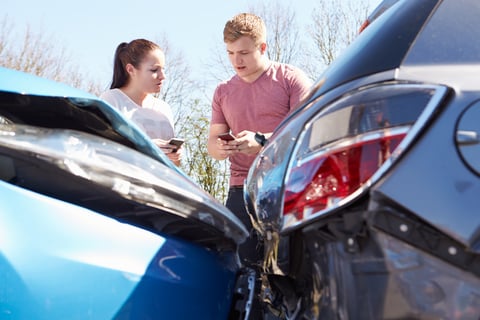
Accident Guide for Teen Drivers
1. Stay Calm and Alert
Stay in the car, keep your seat belt on, stay calm, and turn on your hazard lights. Look to see if other drivers are approaching the area. Never leave the scene of the crash before the police or the other driver.
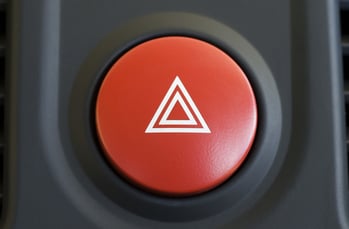
Car Hazard Lights Button
2. Get Help
Dial 911 to report the accident and ask for help. If the other driver seems angry or agitated, don't engage with them. The 911 operator can further guide the process and provide essential safety assistance. Limit discussion of details and facts of the accident and provide these details to the police officer.
3. Take Photos
But only if it's safe! Never get out of your car to examine damage or take pictures on a dark or busy road or highway. It may be safer to move the vehicle off the road first. IF IT'S SAFE, take pictures of the road, damage to the cars involved, and anything else that tells the story of what happened.
What types of accident pictures should you take?
- Damage to all cars involved in the accident and license plates
- All non-car property damage caused by the accident, such as road signs, fences, or utility poles
- A video showing traffic conditions and traffic light intervals if applicable
- All marks on or off the pavement, such as skids or gouges
If possible, get your vehicle away from oncoming traffic and as far off the road as possible. Use the most generous shoulder of the highway, a shopping center parking lot, or a driveway in a rural area.
5. Call Your Parent or Guardian
Your parents want to hear and know that you're okay. Your parent may also want to come to the scene to assess the situation and give you a safe ride home. It doesn't hurt to have the support either
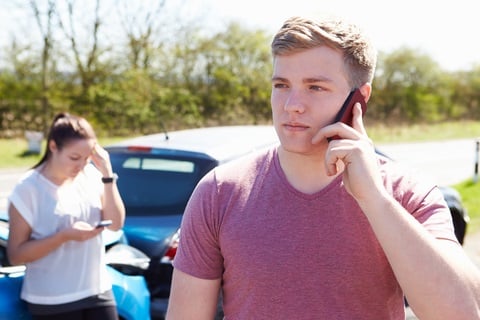
6. Get Witness Information
Ask anyone who saw the accident if they would be willing to provide that information to police or insurance providers. Get their name, address, and phone number. The more key information you have, the better.
7. Exchange Insurance Information
Gather your information. You'll need your license, car registration, and current insurance information. Get driver names, passenger names, contact information, insurance names, policy numbers, make and model of the cars involved, and license plate numbers. Use your phone to take pictures of each. Do not discuss the accident with anyone but law enforcement.
8. Record The Details
After you're safe and at a stable location, record the details of what happened while they are fresh in your mind. You can even use the voice recorder on your phone to include what happened before, during, and after the accident.
9. Contact Your Independent Agent or Give us a Call
We're here to help! Call your local agent or our toll-free Claims Hotline at 1-877-968-7252.
10. Call For Emergency Roadside Assistance
If your car is undrivable or you are unsure if it is, it's better to call a tow truck or utilize VDOT's Safety Service Patrol for interstate collisions than risk more damage or a breakdown trying to drive home. You may also have roadside assistance on your car insurance policy or you may call a tow truck.
Learn more about car insurance in Virginia
THE NORTHERN NECK INSURANCE INTEGRITY PROMISE — We pledge to provide straight talk and good counsel from our NNINS Virginia insurance experts through our blog. While we hope you find this to be a helpful source of information, it does not replace the guidance of a licensed insurance professional, nor does it modify the terms of your Northern Neck Insurance policy in any way. All insurance products are governed by the terms in the applicable insurance policy.


